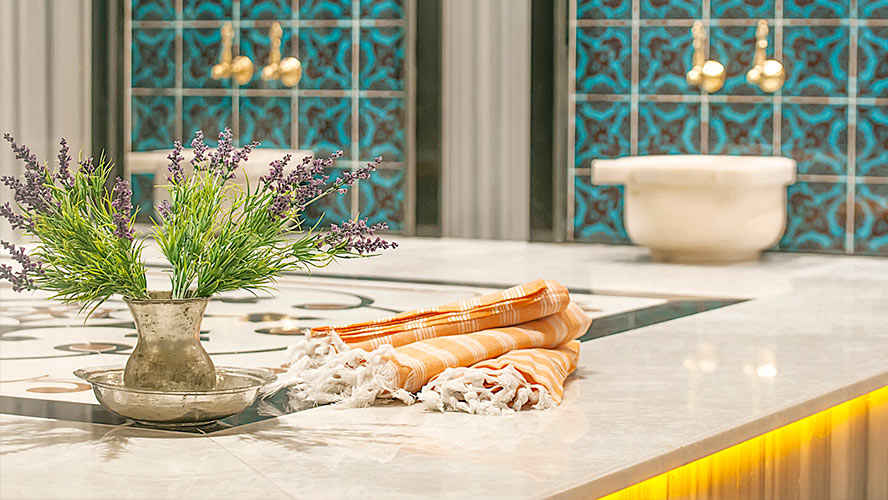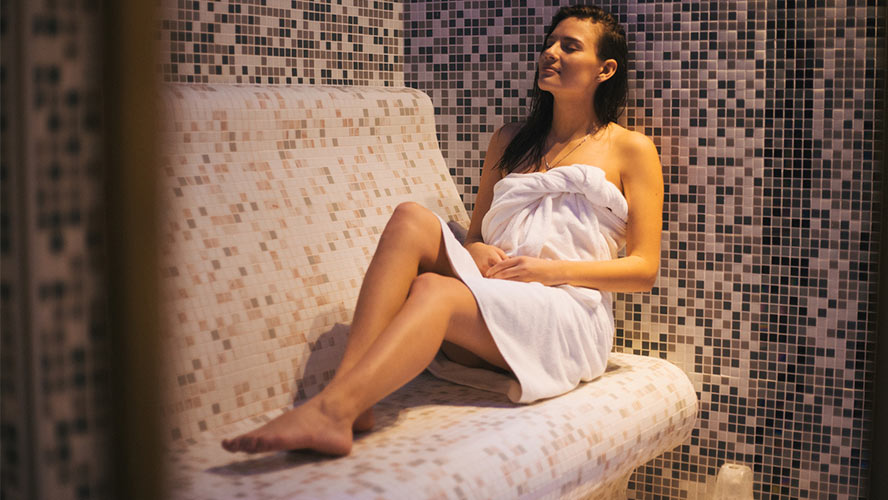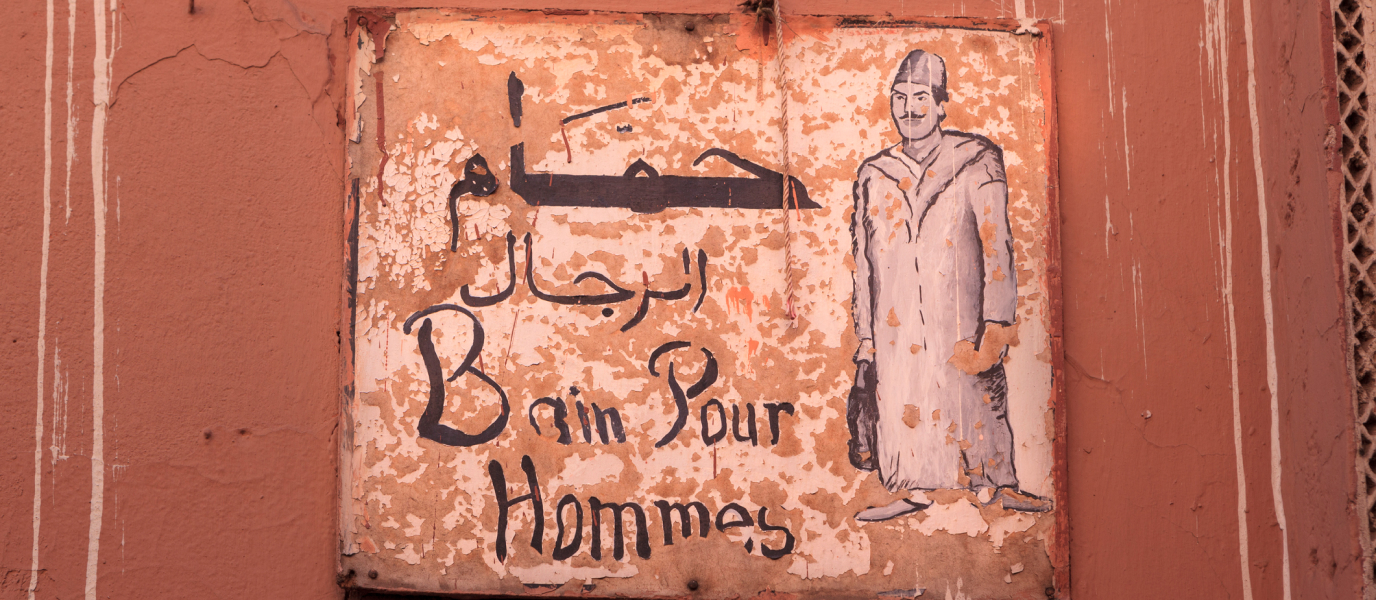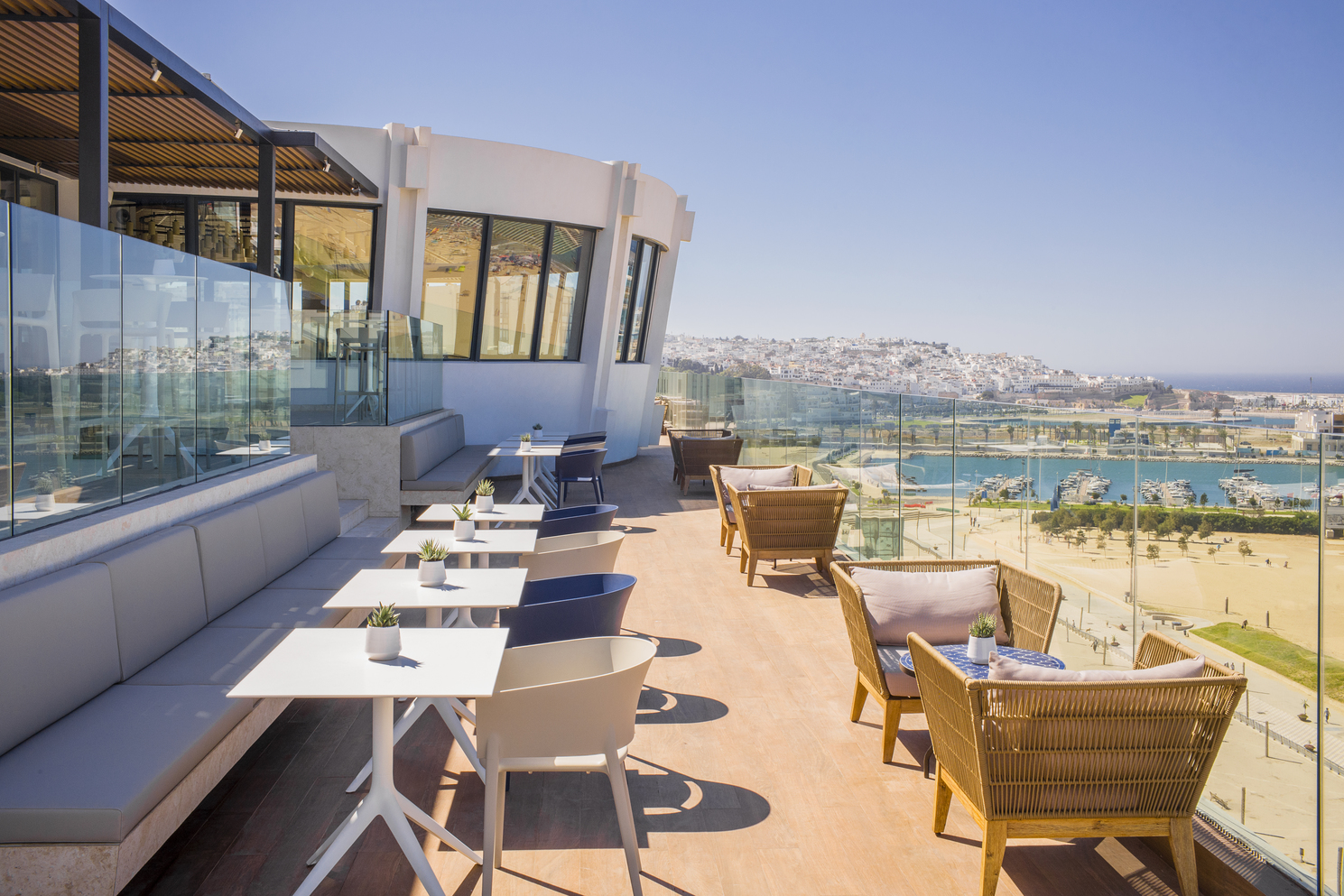A visit to a Moroccan hammam is the best way to connect with the traditional life of Moroccans. This ancestral service of aesthetics and body relaxation has been exported all over the world, so we can find Arab baths in many foreign countries. Its origin is a legacy of the Roman thermal waters, whose use spread throughout the Ottoman Empire.
In all the cities of Morocco, and in Tangier too, there are Arab baths, public and private. There are large ones with separate rooms for men and women, but others, smaller ones, only cater to one or the other sex. There is a third category of hammam, and they are those that have days of the week or different schedules reserved for men and for women. What there are not are public hammans of mixed character.
One of the great secrets of the hammans is the black soap or beldi, made with black olive oil and that has natural exfoliating properties. For some time now there has been a proliferation in Tangier of private steam baths oriented to tourism.
What is a hammam. History of steam baths
A hammam, also known as an Arab bath or Turkish bath, is a type of steam bath that, in addition to cleansing the body, aims at a state of general relaxation. Hammams have played a prominent role in Eastern cultures as a social gathering place, as a hygienic ritual and as an architectural space.
In Islamic culture, the Turkish bath had both religious and civic significance, since ritual ablutions were performed inside it. There is evidence that this type of public baths already existed in the Umayyad caliphate (VII and VIII centuries) and the curious thing is that its importance has been maintained until today. The first Islamic Turkish baths were apparently built in the region of Syria as part of palaces and castles in the desert. It is also said that it was the Ottomans who introduced hammams in Central and Eastern Europe, from Greece to Hungary. In Morocco, many Turkish baths still operate today in cities such as Fez, Marrakech or Tangier, mainly in the medinas.
A curiosity: the word “hamman” means “heat” and the term “Turkish bath” was first recorded in English in 1644.
The itinerary followed inside a hammam in Morocco is as follows: first you enter the hot room, where the body gets used to a high temperature; then, the route continues to the warm room, where the pores of the skin are opened to allow further cleansing; later, you return to the hot room for a thorough bath with soap and, finally, you reach the cold room, to remove the soap and sweat, in addition to accustoming the body to a normal temperature.

The hammam, a weekly activity?
The properties and benefits of a hammam are many. They say that it increases the exchange of oxygen in the lungs, opens the airways, relaxes the nervous system and reduces stress and anxiety, dilates the pores of the skin leaving it smooth and soft, releases toxins through sweat, accelerates metabolic functions and stimulates the hormonal system, producing feelings of well-being; it is beneficial for hair, relieves symptoms of menstruation and helps reduce teenage acne.
For these and other reasons, it is recommended to go to the hammam once or twice a week. Of course, what is clear is that it serves to awaken the five senses.
Selection of the best hamman in Tangier
If you want to have a pleasant experience in a hammam or Arab bath in Tangier, you should select one among those with the best ratings in the city. We help you to find the best hamman or spa in Tangier:
La Tangerina (Rue Riad Sultan, 19). Located in the middle of Tangier’s kasbah, this ancient Arab bath was resurrected from the ruins by two young entrepreneurs who discovered it when they were making their house. It is one of the few remaining baths in the kasbah and is open to the public by reservation, because only four people enter it. It has the particularity that it admits couples and offers “peeling” treatments and traditional massage.

Bayt Alice (26 rue Khatib). Located next to the Zoco Chico square, this solar-powered hammam offers exfoliating treatments, hair and body massages with argan oil that end with tea and pastries. It is open to the general public.
Serenity Day Spa (Rue Adodlfo Fesser). The building is very nice and the experience is rewarding. The bath is large, well appointed and very clean. They offer hamman sessions with henna and hot steam and offer you a lemon drink, tea or a bottle of water. There is also a swimming pool and gym and the price is reasonable. If you wish, there is a beautician service.
Massage Hamman Tanger (Av. Sanhaja, 21). This steam bath also functions as a massage and esthetic center, but only for a male public. They have pedicure service, facial aesthetics and therapeutic massages.
Rules and what to bring to the hammam
Moroccans say that the basic rules for taking a bath in a hammam are not written in stone, but it is true that many users do not know what are the rules to follow. Here we tell you what you have to do and bring if you decide to visit a hammam in Tangier.
All hammams have a locker room where clothes are kept, but it is advisable not to bring valuables so as not to be concerned about security and to enjoy the experience at ease. Most people leave their underwear on, but there are those who are less modest and opt for full nudity. It is better to ask the people in charge of the place. You should find out beforehand if you need to bring your own shampoo and gloves if you want to take a full bath. The same goes for towels and other items, although they are usually offered for little money. It is also a good idea to bring your own mat to bathe on, and make sure you know not to put your feet or sit in the buckets of water. When you speak, you should do so in a very low voice. Of course, relaxation and enjoyment is a must, as this is a unique experience.


















































































